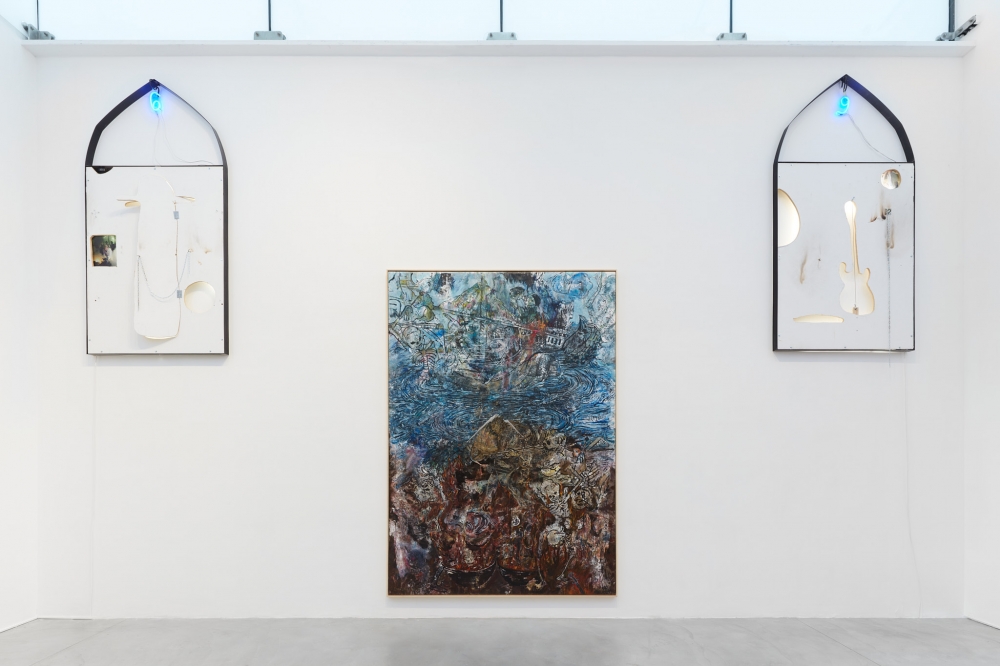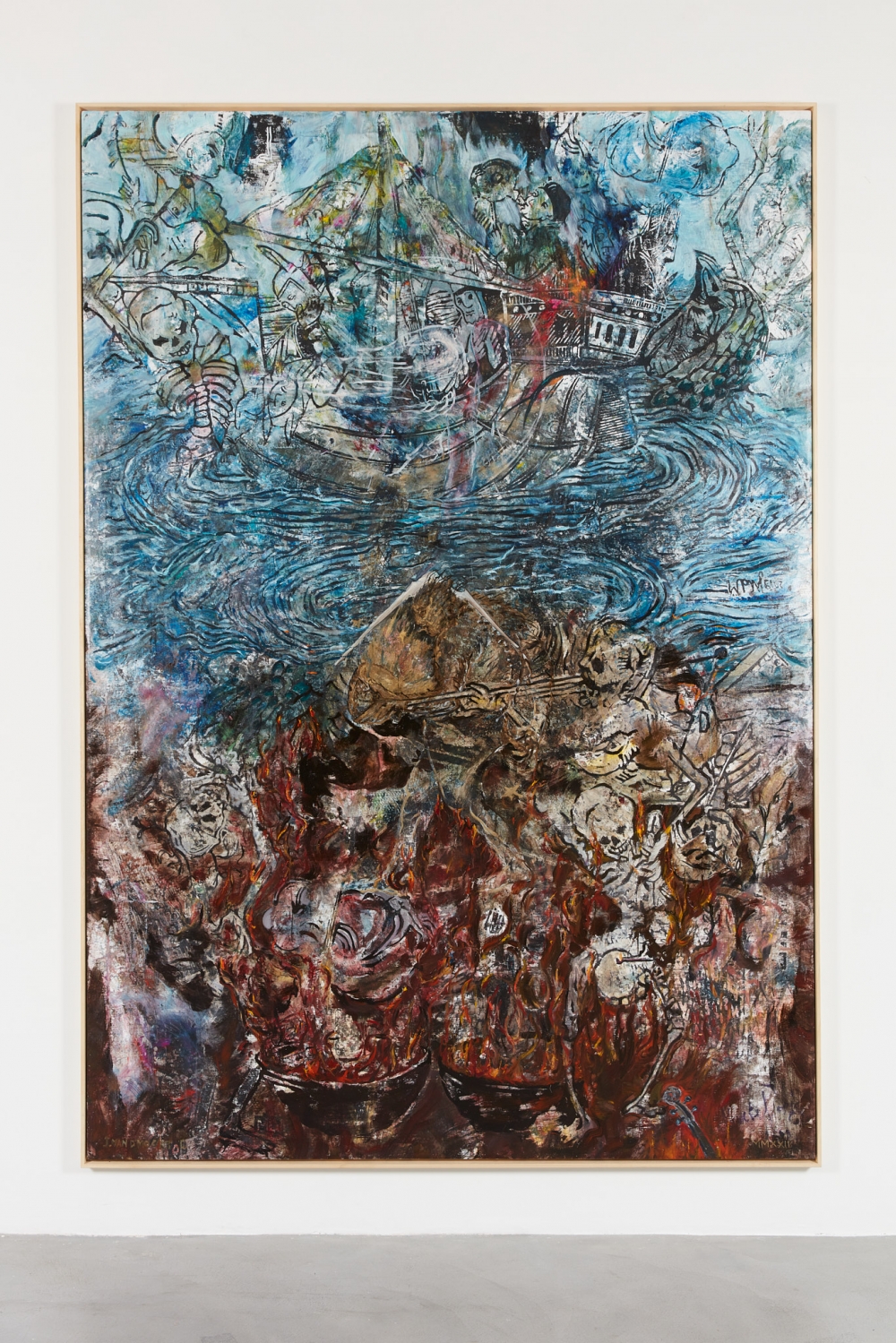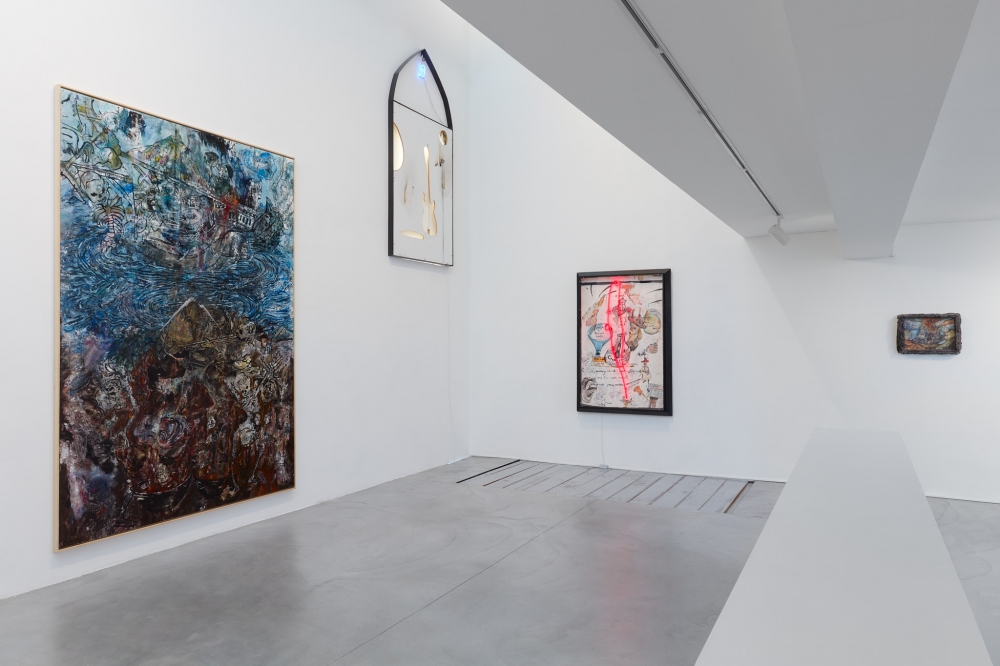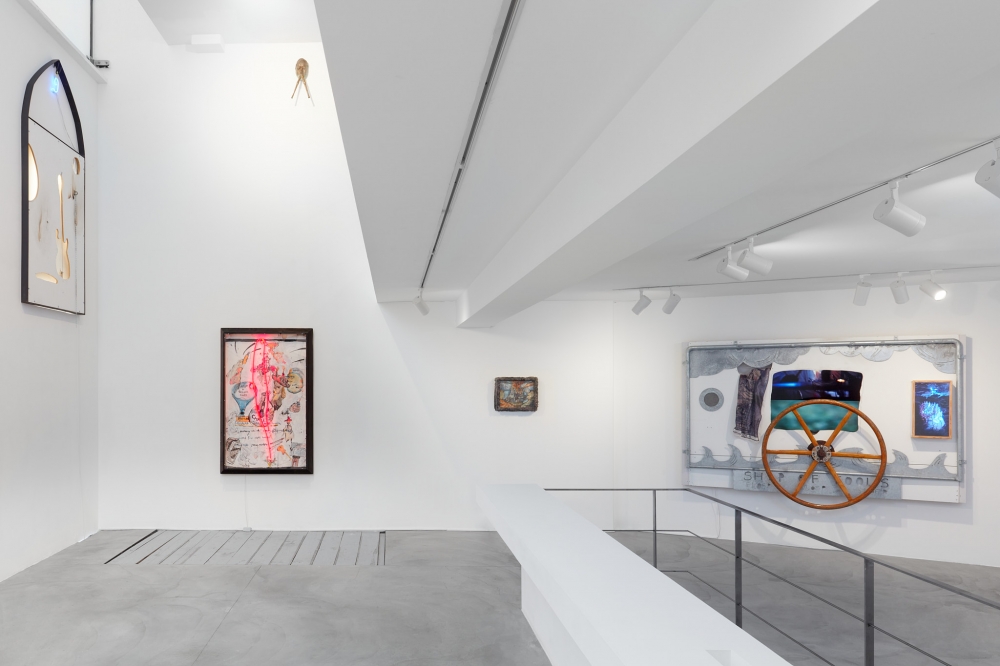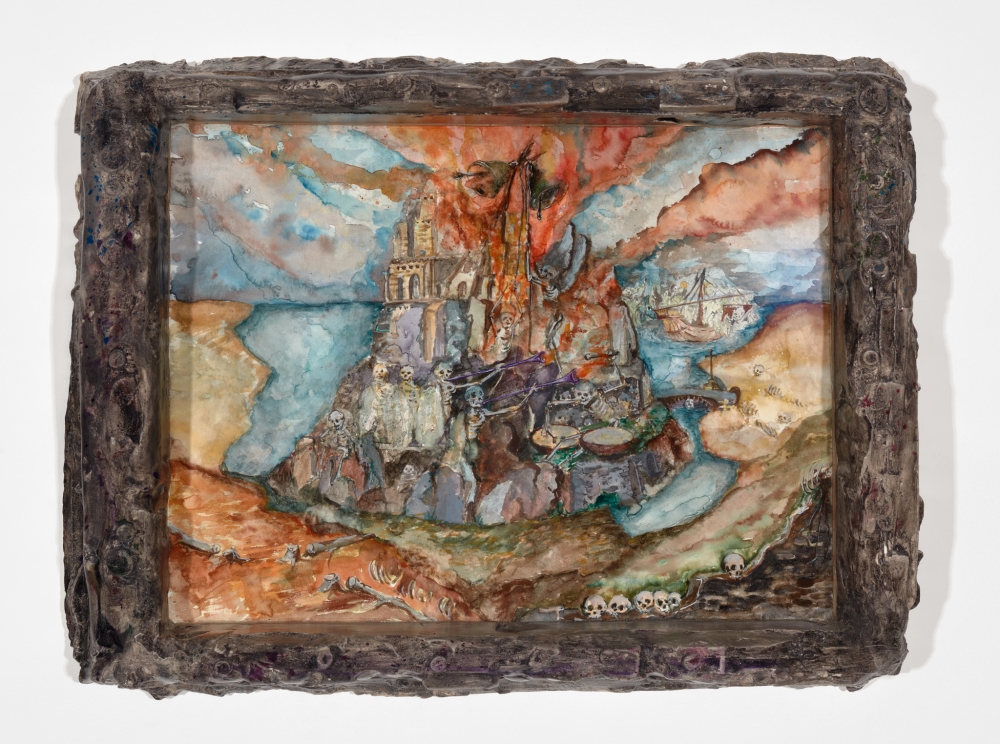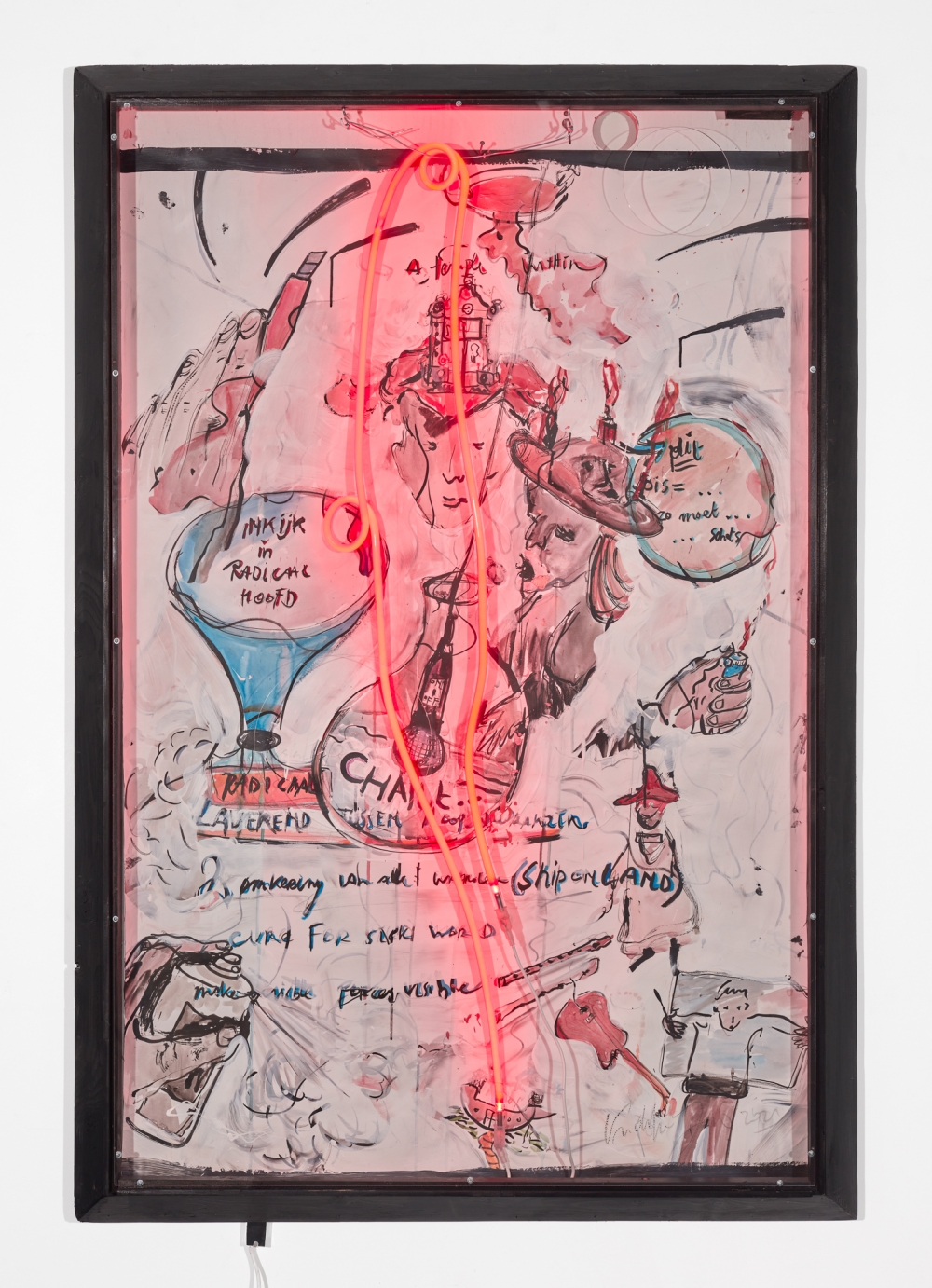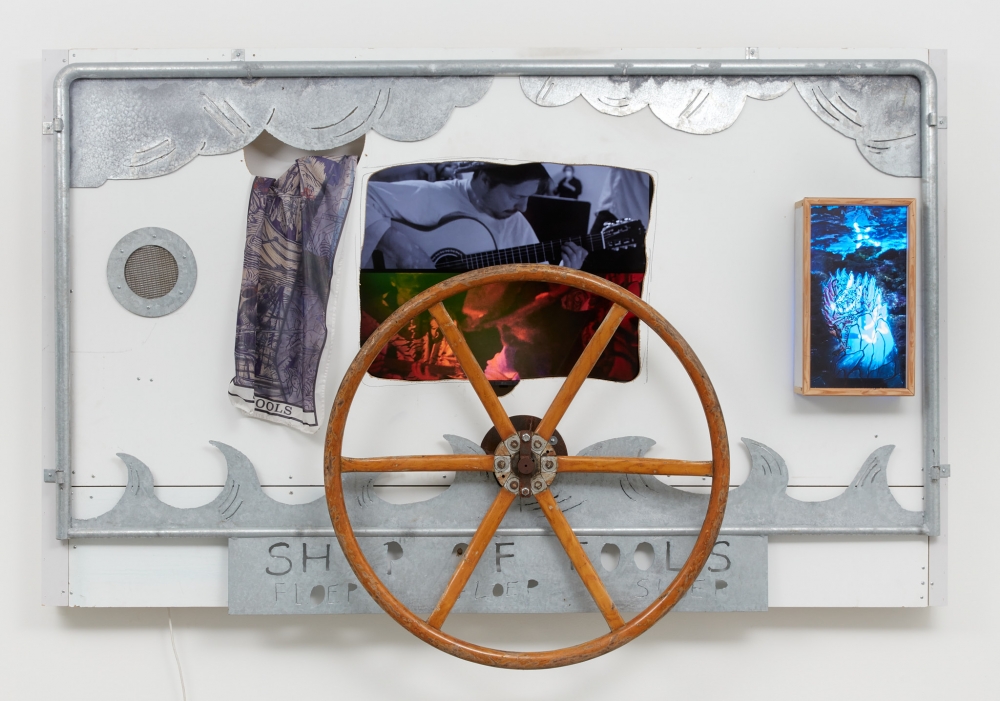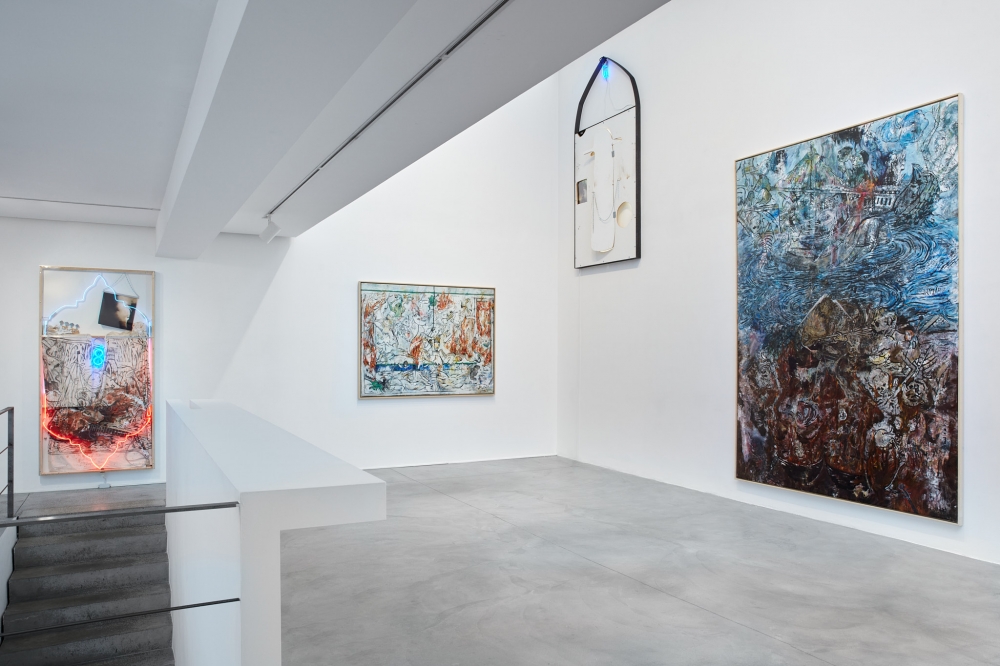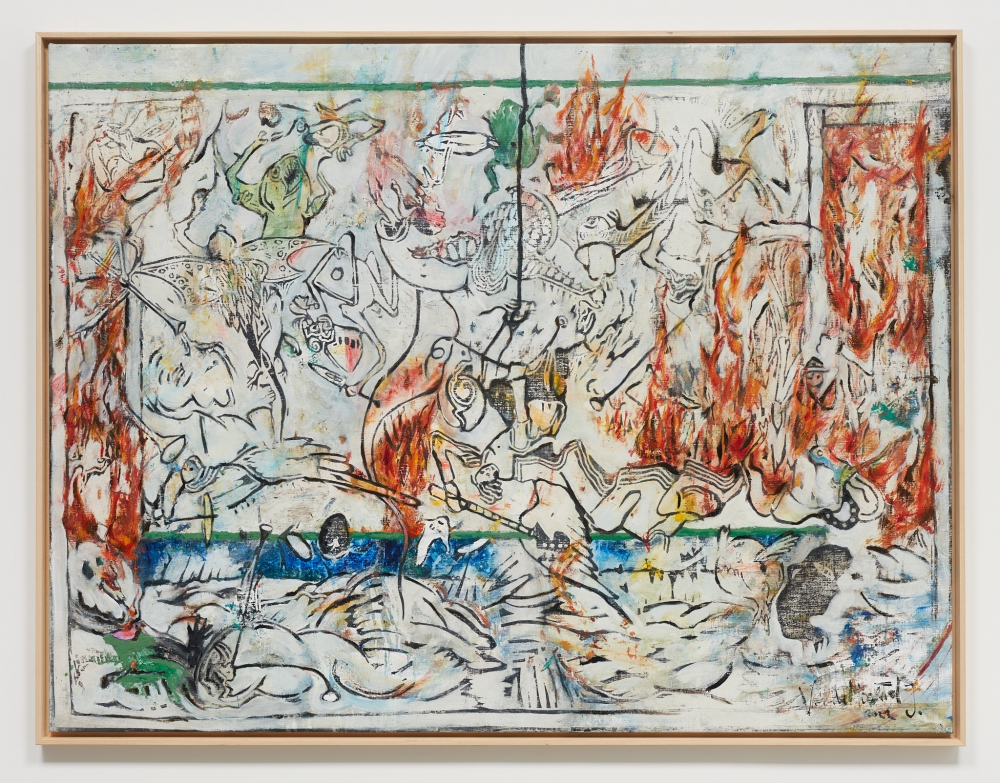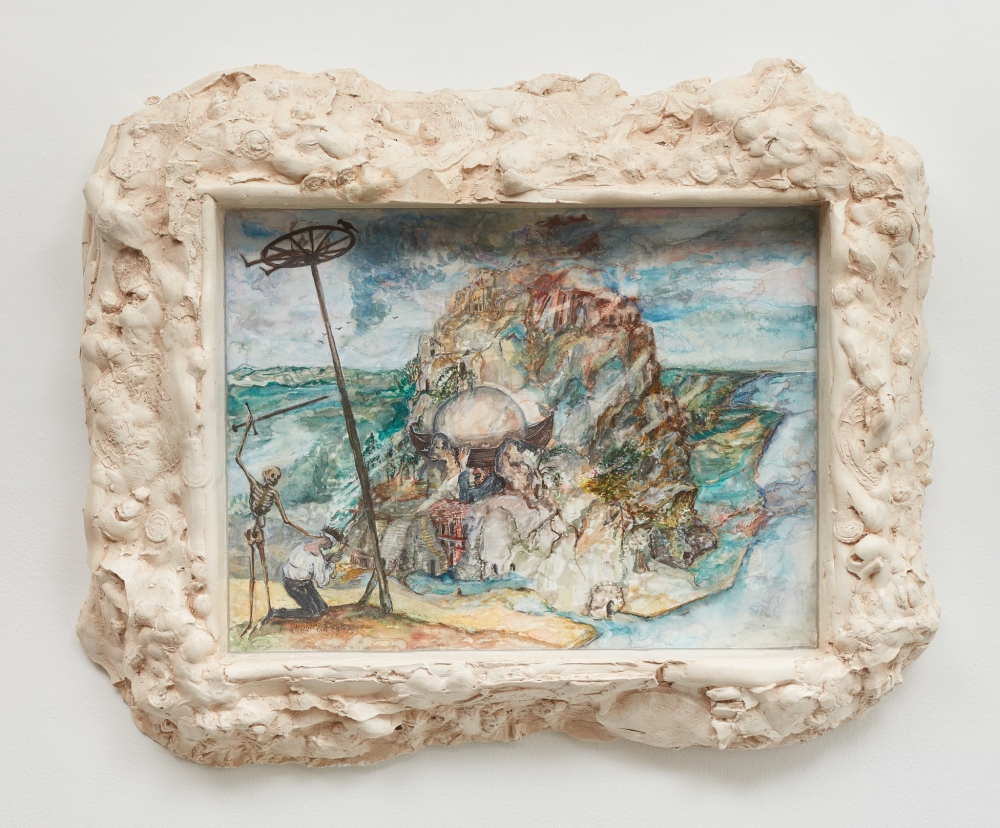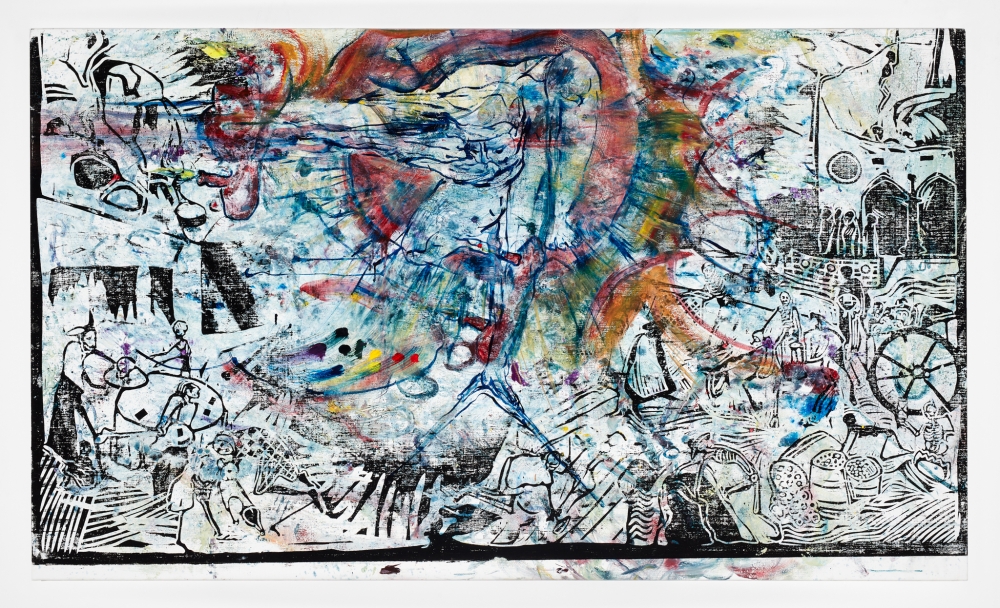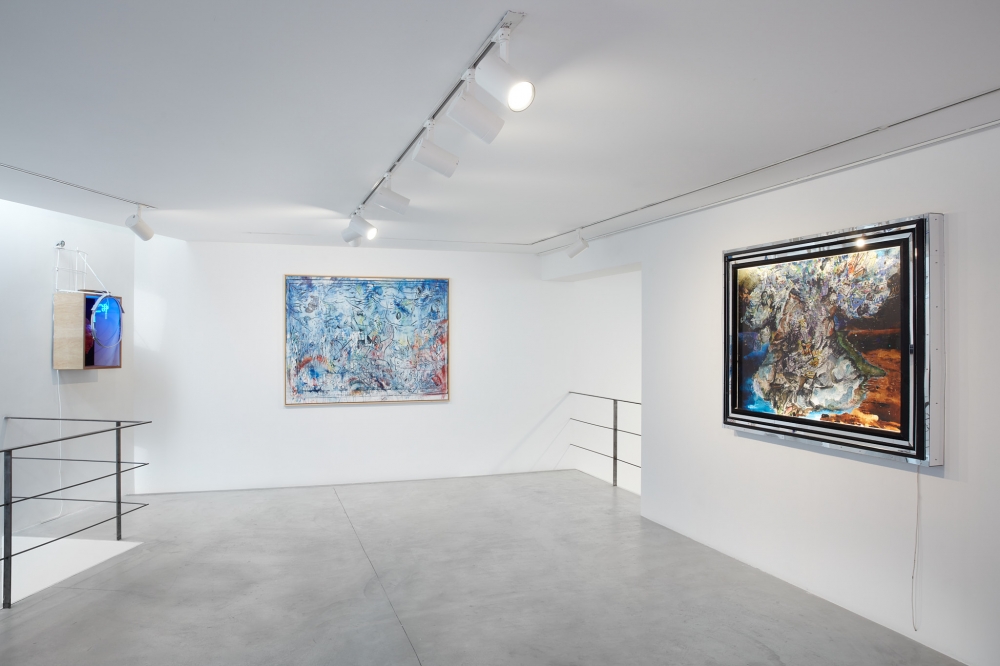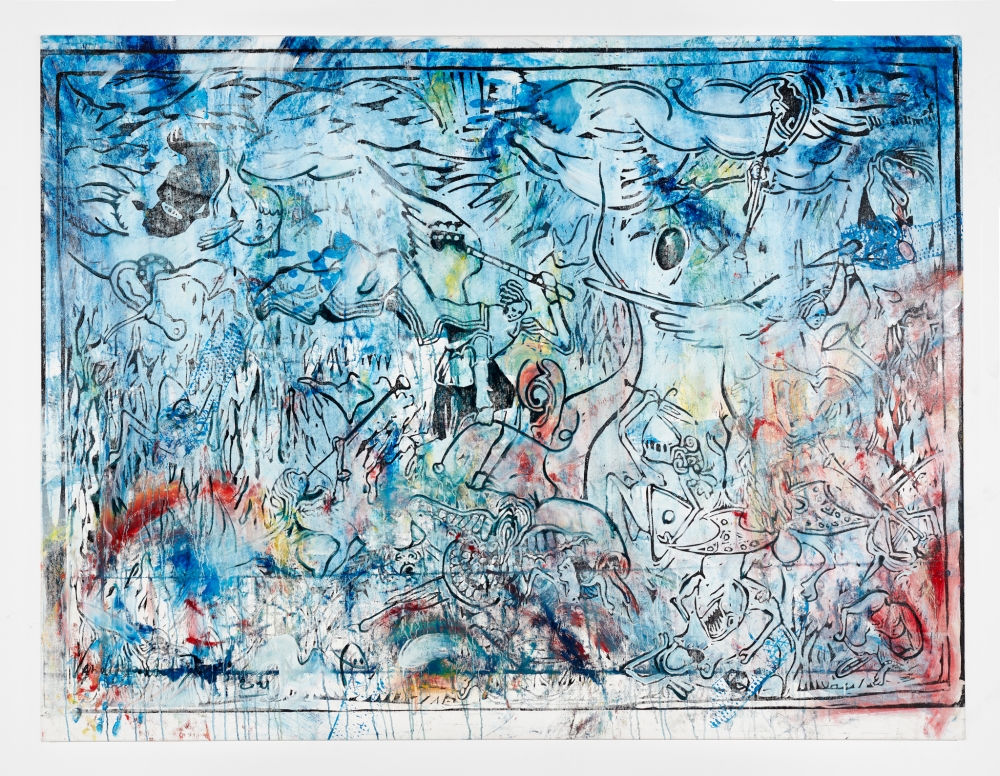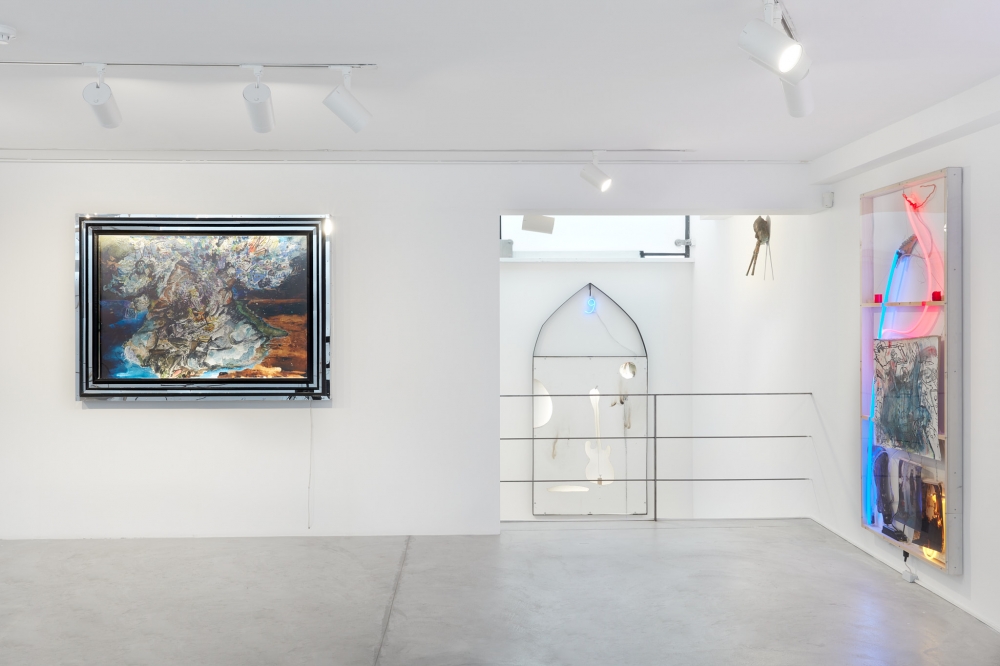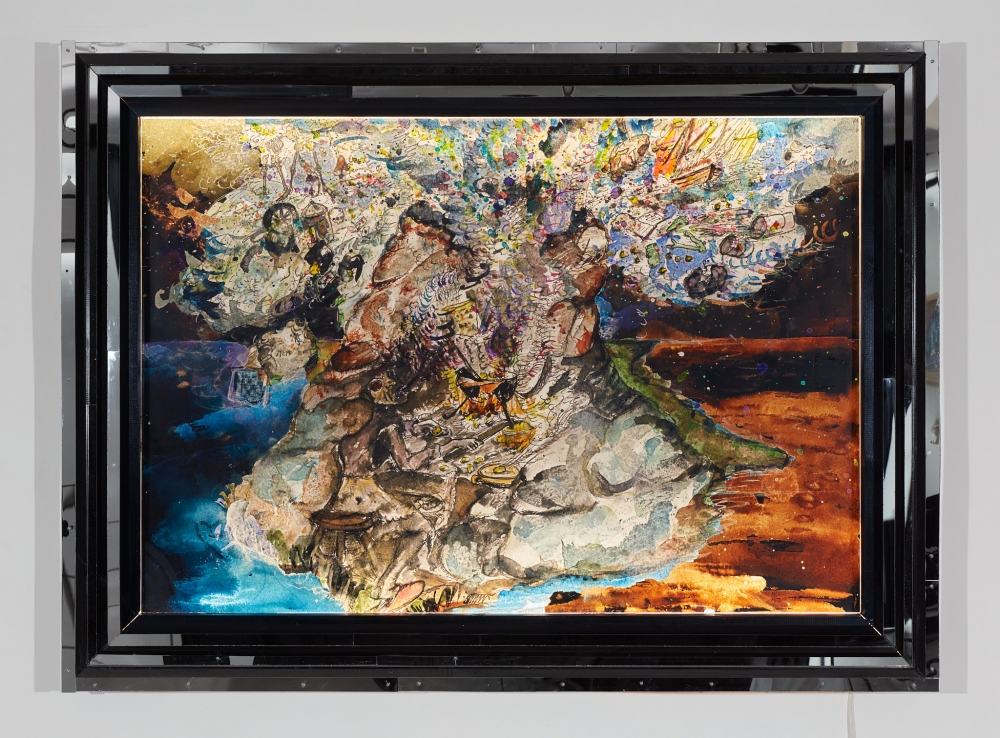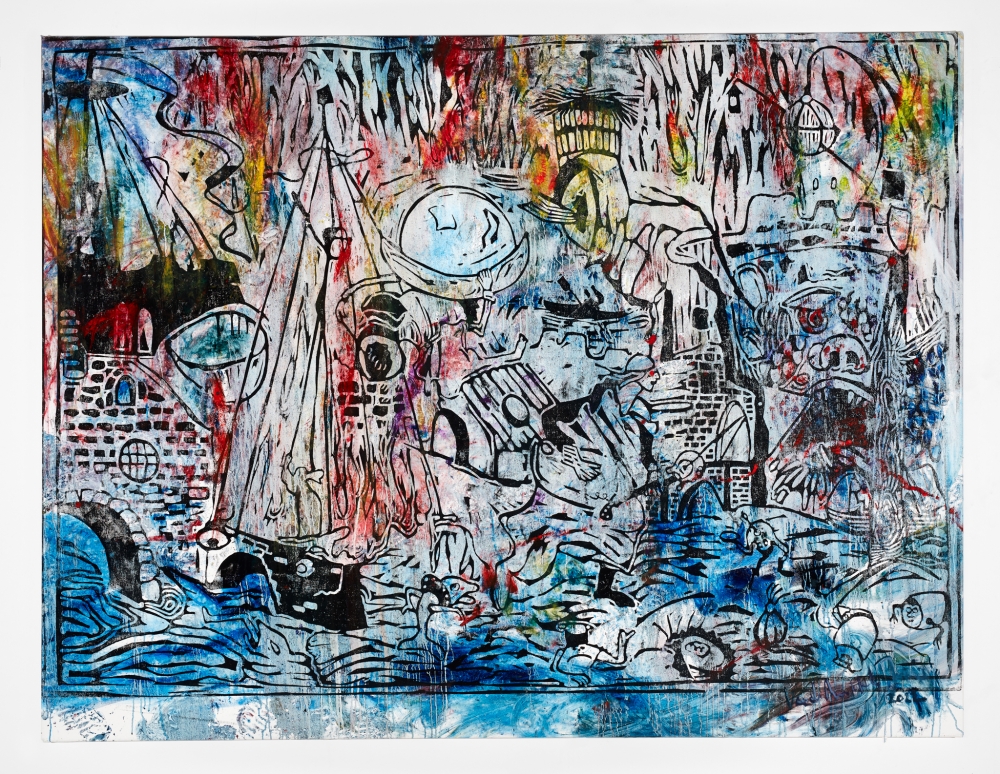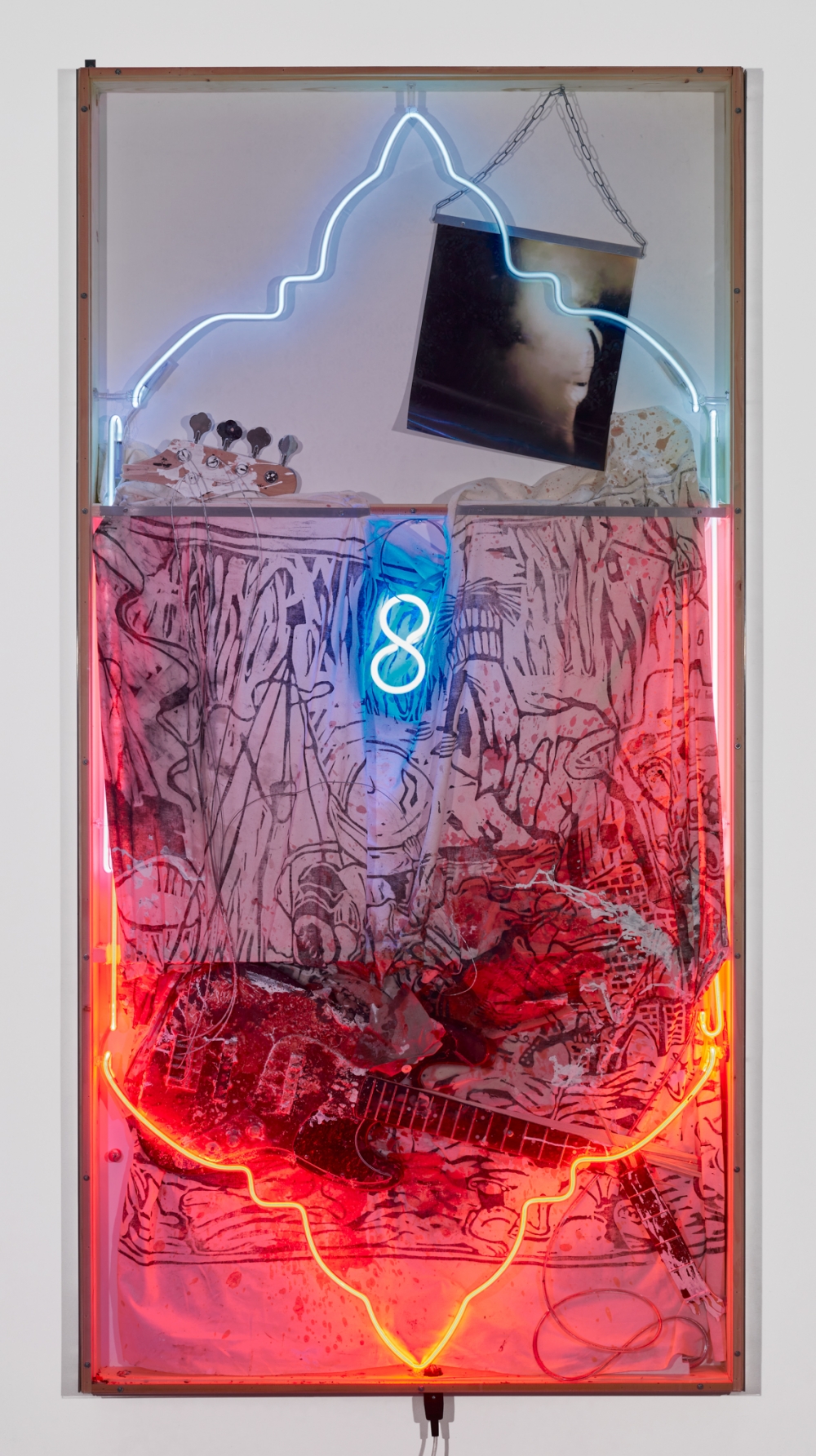In these new works, Joris Van de Moortel takes up a medium that historically echoes the references he invokes in his
work. The artist dialogues with the paintings of the Flemish Pieter Brueghel, the English painter William Blake and
the Belgian James Ensor. Motifs such as the Dance of Death (taken from the works of Hans Holbein) or the figure of
Urizen (the old man who embodies wisdom, the architect of the universe) are applied to the canvas with the woodcut
technique, which the artist already used earlier in his installations, and onto which he then applies layers of oil paint. The
imprecision of this medium blurs certain details, inviting the viewer to immerse him or herself in the depicted scene in
order to grasp all of its nuances. According to the artist, "these works turn the worldview of the 16th century on its head and
hold up a mirror to the struggles of our time, reflecting, in this way, a chaotic era.”
Installations made up of various elements, such as neon lights, broken guitars, Plexiglas etc. evoke both the assemblages
of Robert Rauschenberg as well as the surrealist and mythological universe of Leonora Carrington. Joris Van de Moortel
creates performances that are based on improvisation, music and experience, using heterogeneous elements such
as water, fire and wax (glass, wax, fire, white, smoke, nature, vandal - the artist's personal reinterpretation of the seven
sacraments of the Catholic faith).The works If 6 turned into 9 (i don't mind) le trou du fou (guitar) and If 9 turned into 6
(i don't mind) le trou du fou (door for a hat head) are remains of performances, with a carefully considered arrangement
and aesthetic. They function as memento mori of the destructive energy that flows between the artist, the spectators,
his musicians and his props during these often unpredictable performative moments. This is evidenced in the video
works presented here. These
performances are also a way for Joris Van de Moortel to write his own mythology, which he extends with the development
of a Tarot card deck, also shown here in the exhibition for the first time.
The phenomenon of a change of state, of transition, fascinates the artist and can be seen throughout his artistic practice.
Both the form and the subjects of certain works evoke passages in the broadest sense of the word: the passage from
life to death, symbolised by the ship (Ship of Fools), guided by The Figure of the Fool, which takes its passengers to a
fate as murky as the water on which they are sailing. The passage from the divine to the earthly, from order to chaos, is
evoked by the Tower of Babel, the ultimate symbol of human hubris, or by the figure of the transi (a masked skeleton with
a human face who entices the living so as to take them to the world of the dead).
In this exhibition, Joris Van de Moortel continues his exploration of our time and his place as an artist, both observer,
alchemist and participant in our dissonant world. Through his works, he invites us to embark on a ship with an uncertain
destination, whose safe arrival we oddly seem to be responsible for.

